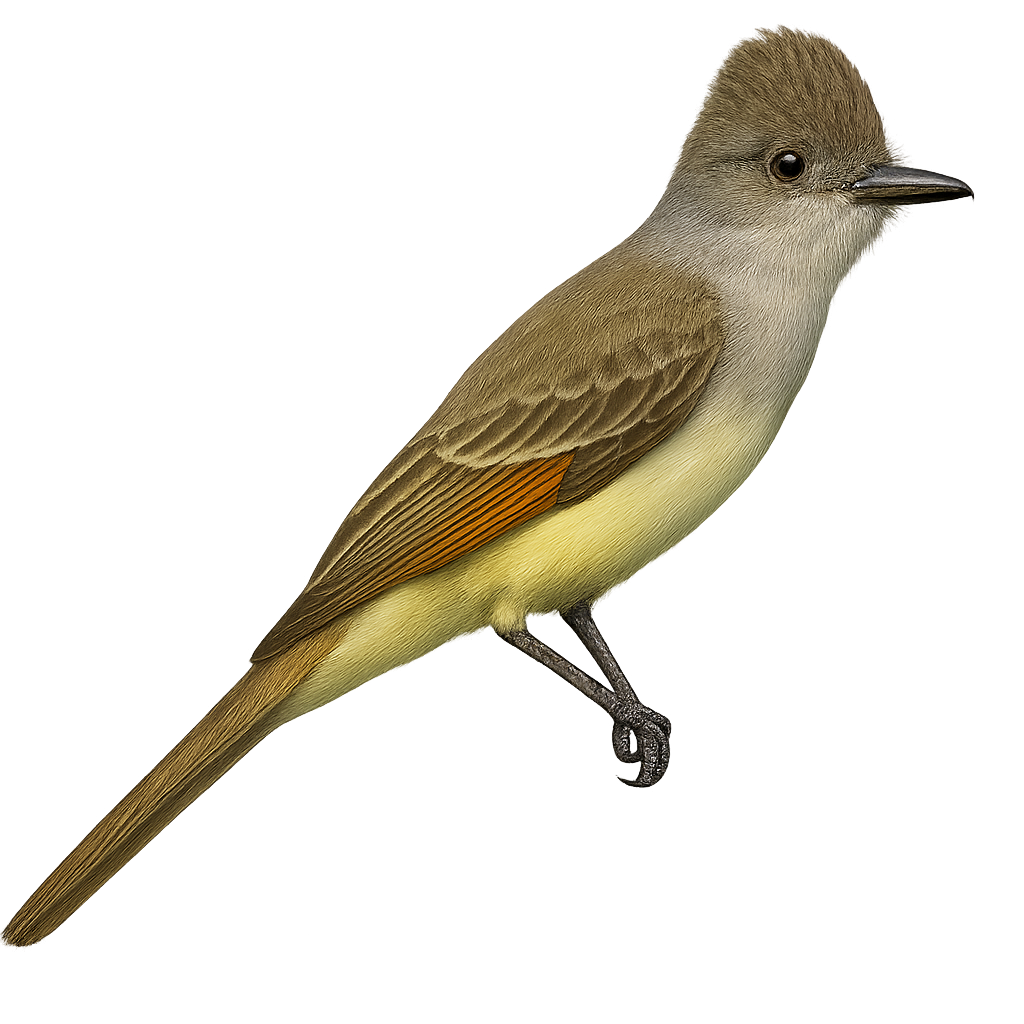Your wildlife photography guide.
Explore the ash-throated flycatcher in detail, study its behavior, prepare your shots.
Where to observe and photograph the ash-throated flycatcher in the wild
Learn where and when to spot the ash-throated flycatcher in the wild, how to identify the species based on distinctive features, and what natural environments it inhabits. The WildlifePhotographer app offers tailored photography tips that reflect the ash-throated flycatcher’s behavior, helping you capture better wildlife images. Explore the full species profile for key information including description, habitat, active periods, and approach techniques.
Ash-throated Flycatcher
Scientific name: Myiarchus cinerascens

IUCN Status: Least Concern
Family: TYRANNIDAE
Group: Birds
Sensitivity to human approach: Suspicious
Minimum approach distance: 10 m
Courtship display: April to June
Incubation: 15-17 jours
Hatchings: May to July
Habitat:
Scrublands, open forests, savannas
Activity period :
Primarily active during the day, with peak activity in the morning and late afternoon.
Identification and description:
The Ash-throated Flycatcher, Myiarchus cinerascens, is a medium-sized bird, measuring about 18 to 21 cm in length. It is easily recognizable by its ash-colored throat and pale yellow belly. Its wings and tail are brownish with lighter edges. This passerine is primarily insectivorous but can also consume fruits and berries. It is found in arid and semi-arid areas, particularly in scrublands, open forests, and savannas. The Ash-throated Flycatcher is a partial migrant, breeding mainly in North America and migrating south for the winter. It is known for its distinctive song and varied calls, often heard during the breeding season.
Recommended lens:
400mm – adjust based on distance, desired framing (portrait or habitat), and approach conditions.
Photography tips:
To photograph the Ash-throated Flycatcher, it is advisable to use a 400mm lens or longer to capture precise details without disturbing the bird. Look for open areas where it is likely to perch, such as exposed branches or fences. Be patient and discreet, as this bird can be suspicious. Take advantage of morning or afternoon light for well-lit images.
The WildlifePhotographer App is coming soon!
Be the first to explore the best nature spots, track rutting seasons, log your observations, and observe more wildlife.
Already 1 439 wildlife lovers subscribed worldwide

